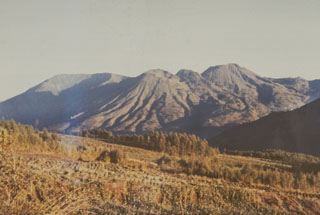Report on Dieng Volcanic Complex (Indonesia) — 25 May-31 May 2011
Smithsonian Institution / US Geological Survey
Weekly Volcanic Activity Report, 25 May-31 May 2011
Managing Editor: Sally Sennert.
Please cite this report as:
Global Volcanism Program, 2011. Report on Dieng Volcanic Complex (Indonesia) (Sennert, S, ed.). Weekly Volcanic Activity Report, 25 May-31 May 2011. Smithsonian Institution and US Geological Survey.
Dieng Volcanic Complex
Indonesia
7.2°S, 109.879°E; summit elev. 2565 m
All times are local (unless otherwise noted)
CVGHM reported that on 29 May gas plumes rose 50 m above Timbang, a cone that is part of the Dieng Volcanic Complex. The gas plumes drifted S through the valley. Observers who visited the cone noted damaged vegetation and dead birds. Seismicity and carbon dioxide gas emissions remained elevated. CVGHM raised the Alert Level to 3 (on a scale of 1-4). According to news articles, about 1,200 people were evacuated from the flanks.
Geological Summary. The Dieng plateau in the highlands of central Java is renowned both for the variety of its volcanic scenery and as a sacred area housing Java's oldest Hindu temples, dating back to the 9th century CE. The Dieng Volcanic Complex consists of multiple stratovolcanoes and more than 20 small Pleistocene-to-Holocene craters and cones over a 6 x 14 km area. Prahu stratovolcano was truncated by a large Pleistocene caldera, which was subsequently filled by a series of cones, lava domes, and craters, many containing lakes. Lava flows cover much of the plateau, but observed activity has been restricted to minor phreatic eruptions. Gas emissions are a hazard at several craters and have caused fatalities. There are abundant thermal features and high heat flow across the area.
Sources: Pusat Vulkanologi dan Mitigasi Bencana Geologi (PVMBG, also known as CVGHM), People's Daily Online (China)

